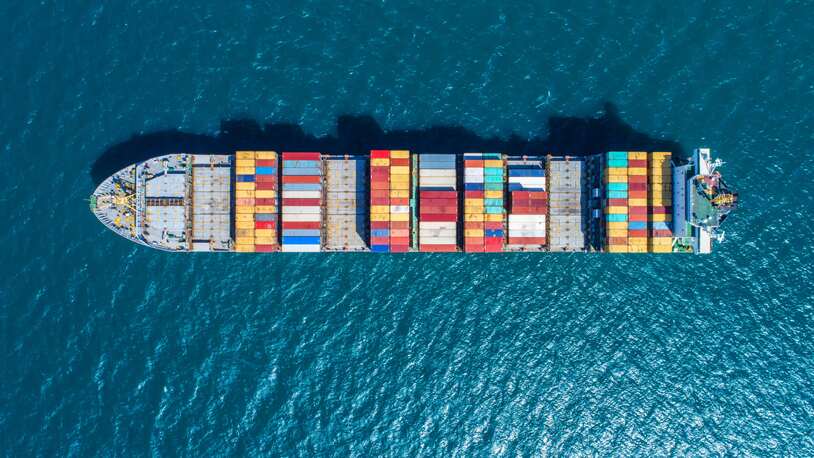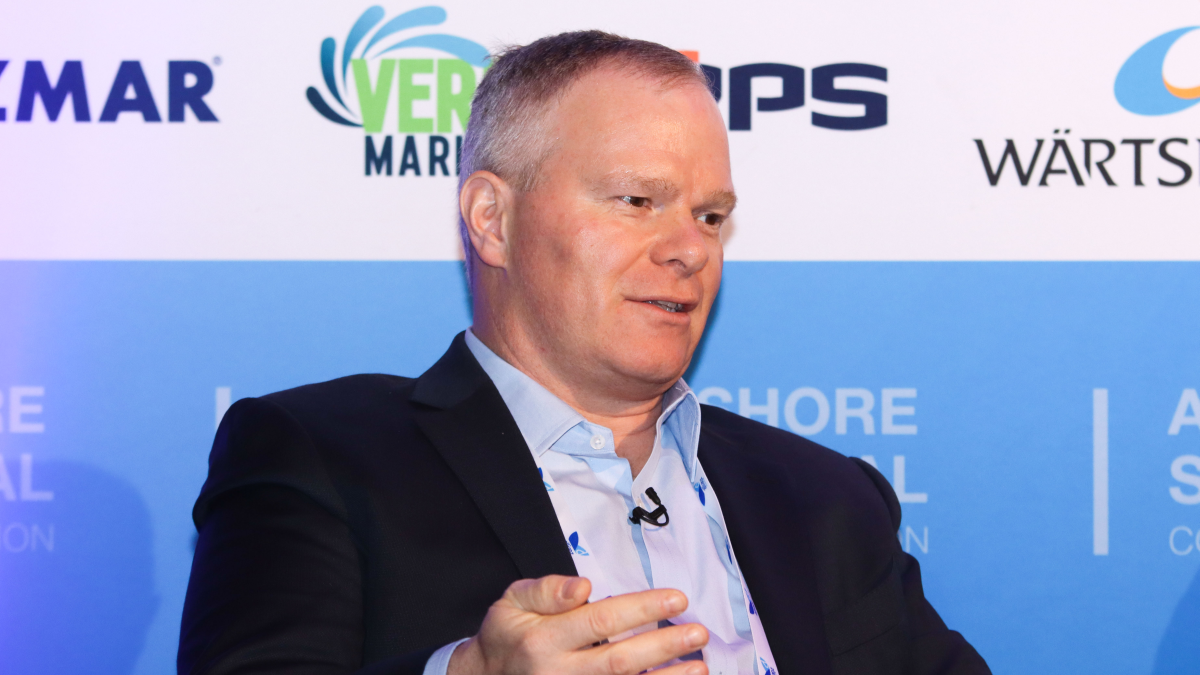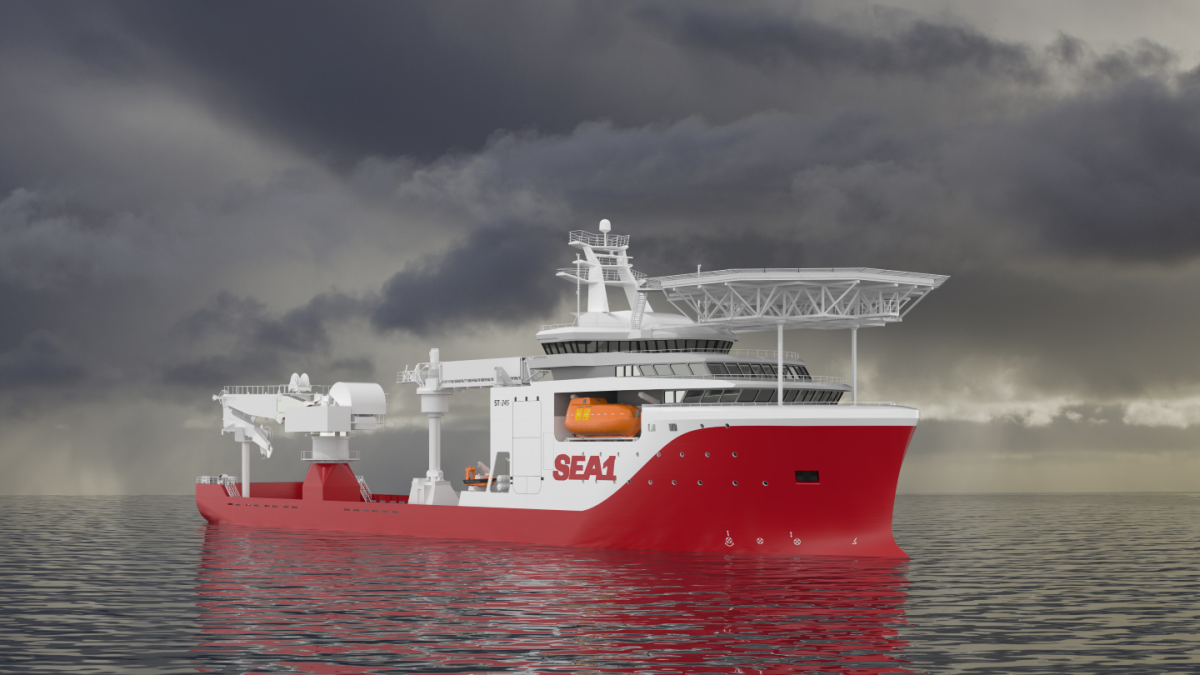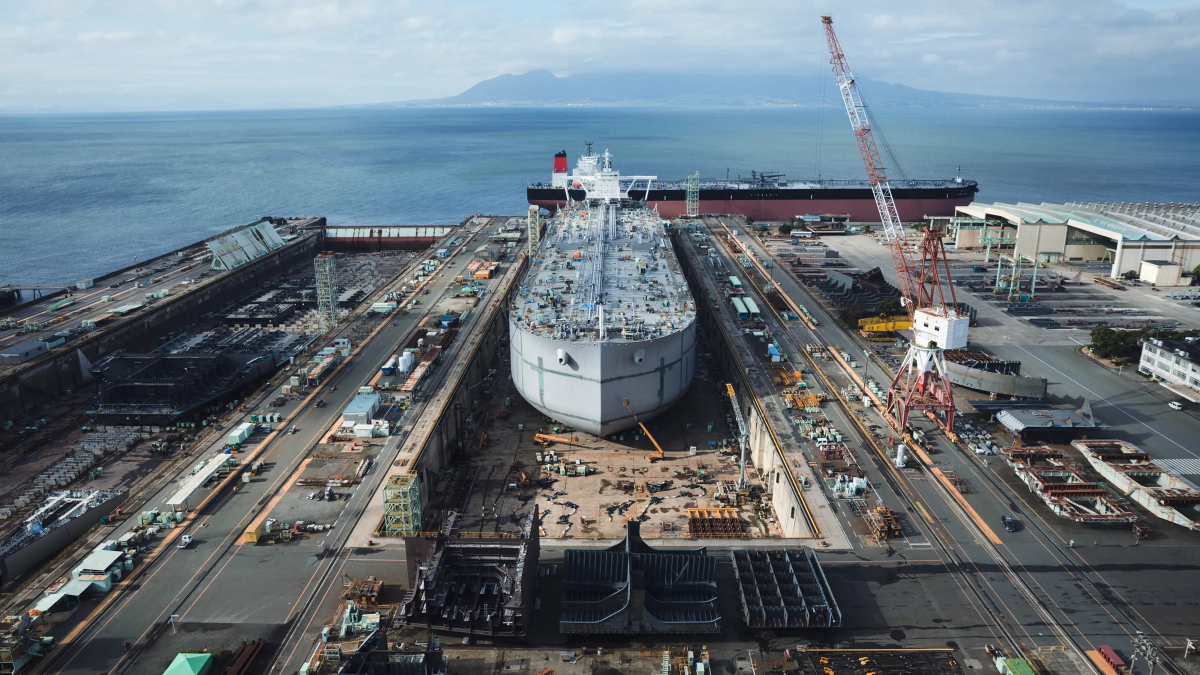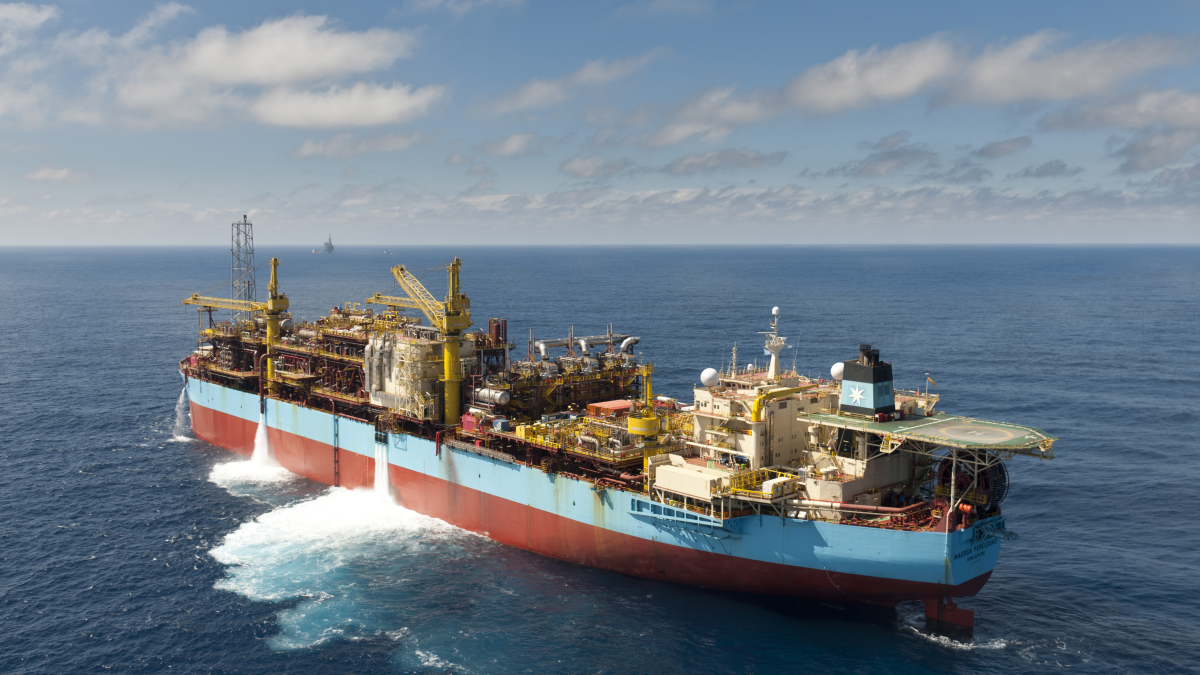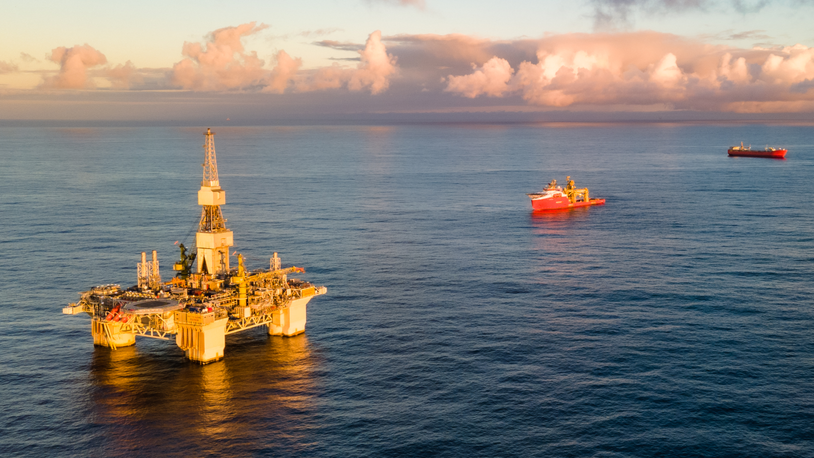Business Sectors
Contents
Register to read more articles.
SEACOR Marine pivots from ‘high volatility markets’
The US OSV owner has posted improved results, selling two liftboats, winning contracts in Brazil and reducing its presence in the North Sea, as part of a strategic shift
Recent vessel transactions and a ‘strategic shift’ from ‘high volatility markets’ have pushed SEACOR Marine back into the black.
Despite lower revenue levels, lower utilisation and a soft North Sea market for Q3 2025, SEACOR Marine posted net income of US$9M, with consolidated operating revenues of US$59.2M, operating income of US$18.1M, and direct vessel profit (DVP) of US$11.5M.
The quarterly results were a stark contrast with the same period in 2024, when the Big Board-listed company had higher operating revenues of US$68.9M but posted an operating loss of US$6.5M and lower DVP of US$16.0M.
SEACOR Marine’s turnaround has been progressing through the sale of older or non-core assets over the last few quarters, which have reshaped its fleet. Recent transactions support the US owner’s shift away from liftboats, towards high-spec platform supply vessels (PSVs). During Q3 2025, it sold two 335-ft-class liftboats to an international buyer for US$76.0M, for a tidy gain of US$30.5M.
Deep value of fleet
SEACOR Marine chief executive, John Gellert, said the transaction “demonstrates the deep value of our fleet and allows us to continue our strategic shift away from high volatility markets.”
He noted: “The third quarter results reflect lower revenues, driven by lower utilisation in our premium liftboat fleet and soft market conditions in the North Sea.”
Of the seven liftboats in SEACOR Marine’s fleet, five are based primarily in the US Gulf and two in the Middle East and Asia. Vessel sales during the preceding quarters saw SEACOR Marine offload two anchor-handling tug supply (AHTS) vessels for US$22.5M, a stacked 20-year-old liftboat for US$7.5M, two 11-year-old shallow-draught platform supply vessels (PSVs) and a fast supply vessel (FSV) for US$33.4M. The two PSVs, ADNOC S06 and ADNOC S07, were purchased by ADNOC L&S and transferred to Al Gafai Marine Services Co.
The transaction led to some downtime in the quarter “as the two liftboats were taken off the market in order to ensure a timely delivery,” noted Mr Gellert in reporting the results for the quarter.
“Low activity, especially in the UK sector, remains a concern”
Among the positives in the quarter were that SEACOR Marine’s average day rates were US$19,490, a 3.2% increase from Q3 2024, and its FSV fleet showed improvements in both utilisation and day rate. During Q3 2025, FSV average day rates were US$14,007 and utilisation was 71%, up from US$13,468 and 67% in the Q2 2025.
SEACOR Marine reactivated two of the three FSVs that were previously cold-stacked in the US, both of which have contracts for international markets. One FSV entered service during the quarter.
| Average utilisation rates in the North Sea as of October 2025 | ||
| Vessel type | Oct-25 | 24-Oct |
| PSVs < 900 m2 | 54% | 64% |
| PSVs > 900 m2 | 61% | 86% |
| AHTS < 22,000 bhp | 34% | 50% |
| AHTS > 22,000 bhp | 56% | 58% |
| source: Seabrokers | ||
Reduced North Sea presence
Furthermore, like other OSV owners, SEACOR Marine is moving high-spec assets out of the North Sea into more lucrative markets. It was awarded multi-year contracts in Brazil for two large hybrid-powered PSVs with contract commencement in Q1 2026. “These contracts will reduce our presence in the North Sea to two PSVs,” noted Mr Gellert.
“We are streamlining our cost structure to reflect the recent asset sales and will utilise our improved liquidity profile to fund our newbuild PSV programme and position ourselves for developments in offshore markets in the near term,” he observed.
In December 2024, SEACOR Marine ordered two Breeze Ship Design Z 4423 multi-purpose supply vessels from China’s Fujian Mawei Shipbuilding. The 88-m hybrid-powered newbuilds will have medium-speed diesel engines and integrated battery storage, with large clear deck areas of 1,000 m2 and accommodation for 60. Contracted at about US$41M per vessel, the MPSVs will be delivered in Q4 2026 and Q1 2027.
At an average age of 6.9 years, SEACOR Marine has a relatively young PSV fleet. It has 19 PSVs, two newbuilds (and options for four more). It also has one of the largest battery-hybrid PSV fleets in the world, with 11 vessels.
“With a better positioned fleet, an improved cost structure and a strengthened balance sheet, we will continue to explore opportunities to redeploy capital into more attractive assets or consolidation,” concluded Mr Gellert.
Rates slide, then spike
Volatility in the North Sea market was evident in September and October. Average day rates for medium- and large-sized PSVs and large AHTS vessels in the North Sea for September 2025 were well off terms contracted for the same vessels a year earlier, according to data from a leading shipbroker. Seabrokers reported that medium PSVs (<900 m2) were £6,889 [~US$9,050], almost a 60% drop from September 2024 when the same vessels were being fixed at £16,953 [~US$22,274]. Average day rates for large PSVs (>900 m2) were £11,644 [~US$15,300], down almost 42% from 2024.
In its September report, Seabrokers said: “An exodus of AHTS vessels from the North Sea is leaving charterers with significant concerns regarding regional supply levels going forward.”
And that exposure was evident in October. With AHTS vessels exiting the region tightening supply, owners responded by raising their offers to spot requirements as high as Nrk3M (US$296,615). “While no actual fixtures were recorded at those levels,” observed the broker, “there were multiple fixtures with day rates of Nrk1.95M to Nrk2M (US$192,815-US$197,760).”
At least 11 AHTS vessels have left the region since the start of September: Island Victory, Normand Sigma, Skandi Jupiter and Skandi Mercury were lured to Brazil, Horizon Arctic, Ievoli Grey and Normand Sapphire sailed to the Mediterranean, and Ben Viking, Skandi Hera, Skandi Laser and Skandi Minder were deployed to West Africa.
In reporting its Q3 2025 results, Oslo-listed Sea1 Offshore described the North Sea AHTS market as “weak through most of the third quarter,” noting that some planned projects were delayed and “some semi-sub rigs on the UK side came off contracts earlier than expected.” The Norwegian owner said monthly average rates were significantly lower than the previous two years for both July and August, and gains in September were “mainly due to vessels leaving the region and thus improving the market balance by reduced supply side. Low activity, especially in the UK sector, remains a concern for the coming months before an expected increase in active rigs from early next year.”
“An exodus of AHTS vessels from the North Sea”
Seabroker forecasts departures will continue to grow in the North Sea, with more vessels set to depart for West Africa and Brazil.
Sea1 Offshore’s revenues are not readily comparable to last year as it sold off nine vessels in July 2024, Sea1 Spearfish in May 2025 and the core drilling vessel Joides Resolution, which was sold for recycling.
Sea1 Offshore’s fleet includes 16 owned OSVs, four newbuilds and seven managed vessels.
Of note is the company’s newbuilding programme, which includes four offshore energy support vessels (OESVs). Based on Skipsteknisk ST245 designs, the vessels will be 120 metres long, with a cargo deck of 1,400 m2. Each ship will feature a 250-tonne deck crane and provide accommodation for up to 120 personnel.
A steel-cutting ceremony was held in September for the first newbuild, Sea1 Diamond, at COSCO Shipping shipyard. The gem-inspired names of the other three newbuildings are Sea1 Citrine, Sea1 Peridot and Sea1 Coral. Deliveries are scheduled for one per quarter from Q1 to Q4 2027.
| Average day rates and utilisation in the North Sea as of October 2025 | |||
| Vessel type | Avg rate | Avg rate | % Change |
| 25-Oct | 24-Oct | ||
| PSVs < 900 m2 | £8,202 | £6,806 | 20.5% |
| PSVs > 900 M2 | £10,369 | £7,113 | 45.8% |
| AHTS < 22,000 bhp | £46,780 | £19,442 | 140.6% |
| AHTS > 22,000 bhp | £75,462 | £18,251 | 313.5% |
| source: Seabrokers |

In discussing Q3 2025 results, company chief executive, Bernt Omdal, said expectations are contracts for the newbuilds will be secured in 2026. “What type of contracts can we expect? We are pragmatic, but typically we will be targeting two- to five-year contracts,” he added.
Mr Omdal also expects the market for AHTS vessels will strengthen in H2 2026, with more campaigns anticipated. “For construction support vessels, long-term demand remains robust, driven by a record subsea backlog from conventional EPCs. However, short-term activity has declined in several key regions, and the downward trend in oil price may lead to deferred investments and spending into early 2026,” he added.
Sea1 Offshore’s PSV Sea1 Atlas (ex Siem Atlas) was fixed on an undisclosed charterer for a firm period of three years with six monthly options available in Brazil. The contract is set to commence in Q1 2026. TotalEnergies has had the PSV under charter in Brazil since 2018.
Older assets on the block
Some older offshore vessel assets coming off recent offshore oil and gas projects in southeast Asia are being offered for sale in auctions in November. One is ZJ2025-0023, a 16-year-old accommodation work barge that is being offered on Shipbid.net by the owner at a starting price of US$8.7M. The 16,500-dwt vessel was built in 2009 by Bojonegara, PT. Samudra Marine Indonesia.
According to information provided by the seller and published on Shipbid.net, as of July 2025, the vessel was in good working condition and was currently under contract with a well-known state-owned company. The vessel is planned to support multiple oil platforms in southeastern Sumatra over the next three years. Its current scope of work includes cable repair, well intervention support, and maintenance of aging offshore wells.
From March 2024 to March 2025, ZJ2025-0023 was under a separate contract with another prominent state-owned oil and gas company. During this period, the vessel provided accommodation, logistics, and deck support services for offshore drilling operations.
Flying the Indonesia flag, the vessel has an overall length of about 95.0 m, beam of 30.0 m, depth of 6.5 m, with accommodation for 300 and a main crane with a SWL of 80 tonnes.
Another asset available for bid on the online auction platform is the 13-year-old AHTS vessel Bourbon Gomen with its associated bareboat charter agreement. The owner has set a starting price of US$7M.
Published details of the auction and vessel show the AHTS has an overall length of about 66 mm, beam of 616 m, depth of 6 m, and draught of 5 m, with a deadweight of 1,901 tonnes. It was built in 2012 by Zheijiang Shipbuilding with diesel-electric propulsion package, including three Cat 3516C Cat generators and three azimuth thrusters. The registered owner of the vessel is Mercury Offshore, located in Singapore.
According to Shipbid.net, Bourbon Gomen’s most recent operational record is from January 2022, when it was carrying out an operation contract for a well-known international oil company in waters near Thailand. The operation ended in October 2025, and plans call for the vessel to sail to the waters near Batam Island, Indonesia and anchor until delivery.
Middle East activity
A new entrant in the offshore space is Riyadh-based Bahri. The Saudi shipowner has made its first foray into the offshore support vessel sector, contracting for a pair of OSVs at SAR 18M (US$4.8m) with an undisclosed international shipyard, for delivery in the H2 2026.
“The OSV purchase will mark Bahri’s entry into the marine support segment, serving offshore oil and gas platforms and construction projects. This aligns with our strategic goal of pursuing business diversification into adjacent sectors,” Bahri said.
No additional details on the vessels, design or shipyard were revealed by Bahri.
Related to this Story
Events
International Bulk Shipping Conference 2025
Tankers 2030 Conference
Maritime Navigation Innovation Webinar Week
© 2024 Riviera Maritime Media Ltd.

